The Body Communication Assist
A Body Communication Assist is used to enable the person to re-establish communication with his body.
The Body Communication Assist does not in any way replace or alter Touch Assists or Contact Assists. Where a person has been injured or has specific areas of the body where an assist is needed, only the Touch Assist or the Contact Assist should be used.
The Body Communication Assist is used only where a person is out of communication with his body for some time, such as after an illness or injury, or has been inactive for a long period of time. But this assist may be done only after any necessary medical attention or other necessary assists have been done. It is not done in place of these.
PROCEDURE
1. Have the person lie on his back. Any tight clothes or shoes should be removed or loosened. It is not necessary to remove any clothing except for heavy or bulky clothing items (such as a jacket or coat).
2. Tell the person that you are going to do a Body Communication Assist and briefly explain the procedure. Tell him you will be asking him to “Feel my hands” and that he is to let you know each time he has done so:
“I am going to be asking you, over and over, to feel my hands. Each time let me know you have done so.”
3. Tell the person, “Close your eyes” and acknowledge him by saying “Thank you” when he does so:
“Close your eyes.”
“Thank you.”
4. Place your hands on the person’s shoulders with a firm but gentle grip. Check with the person that he is comfortable with it.
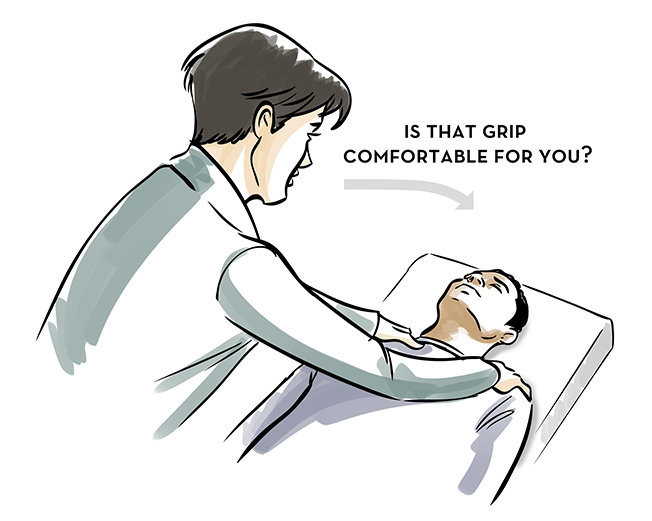
5. Give the command “Feel my hands.” Always give the commands first, then place your hands:
“Feel my hands.”
Do not place your hands and then give the command; that would be backward.
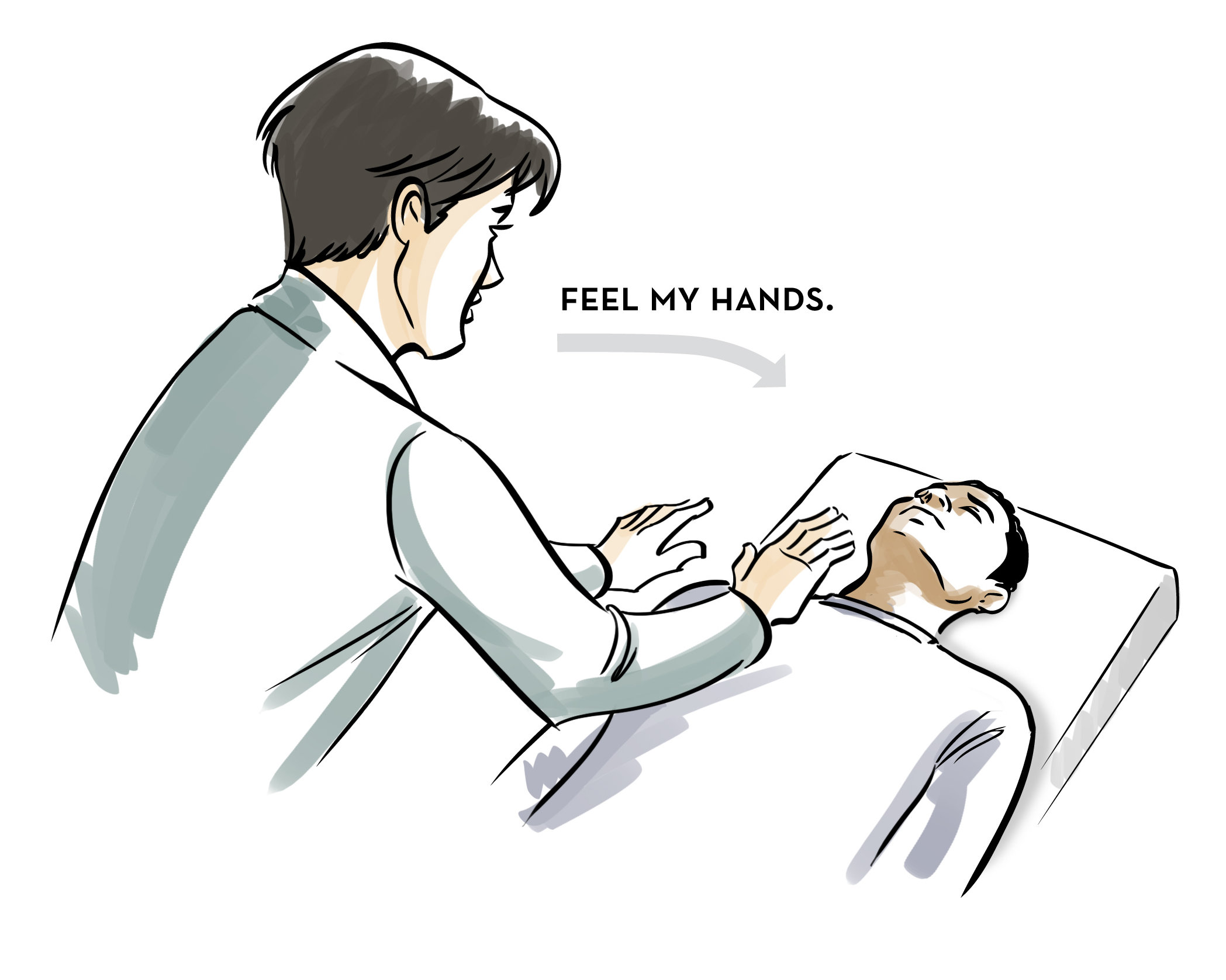
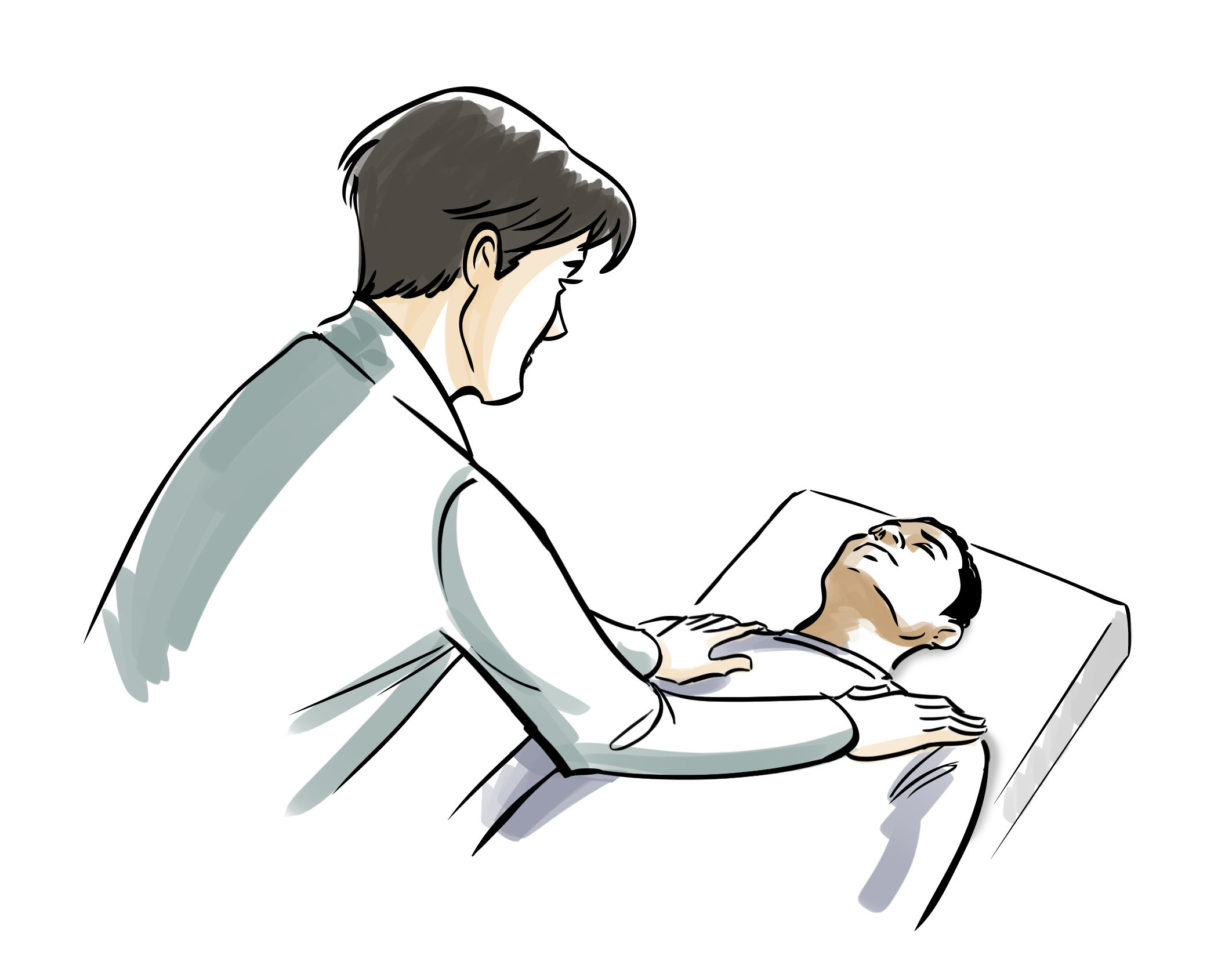
6. When the person indicates he has done the command, acknowledge him by saying “Thank you” or “Good,” “Fine,” “All right” or “Okay,” etc.
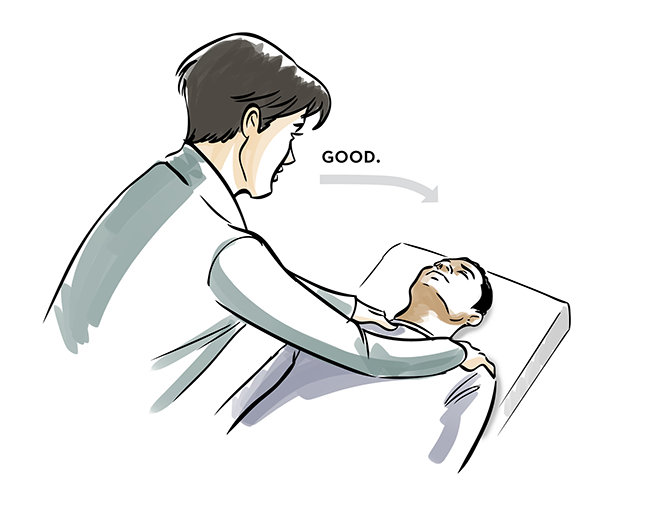
7. Continue to give the command, touching and acknowledging when the person indicates he has done the command.



8. Continue down the body, above the chest, sides of chest, hands on both sides of abdomen (lower part of the body where the stomach is) at the waist.
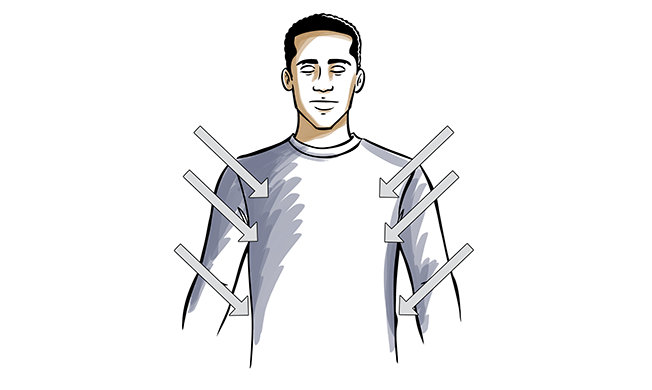
9. With one hand, go around the abdomen in a clockwise direction (clockwise because this is the direction of flow of the large bowel). The bowel is the long tube that carries solid waste from the stomach out of the body.
When using one hand to go around the abdomen, the command is “Feel my hand.”

10. Continue with both hands on the small of the back, one on each side, and lift firmly.
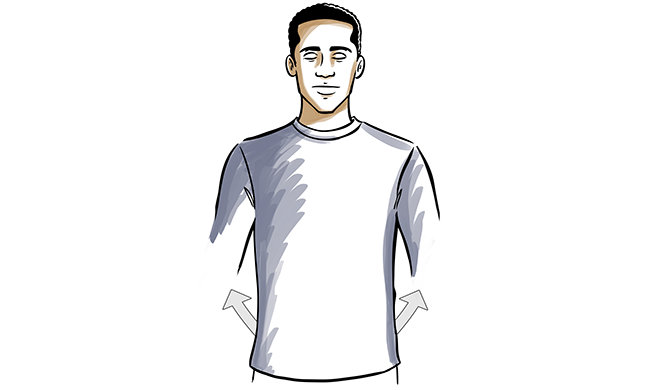
11. Place a hand over each hip with firmer pressure on these bony parts.
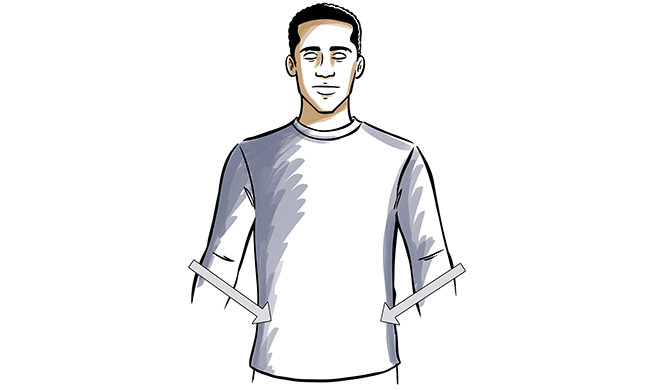
12. With both hands, go down one leg to the knee, then down the other leg to the knee.
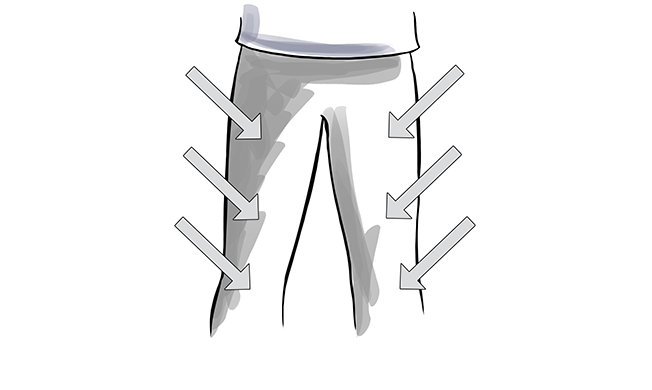
13. With both hands then go down one leg from the knee to the toes. Then go down the other leg from the knee to the toes.
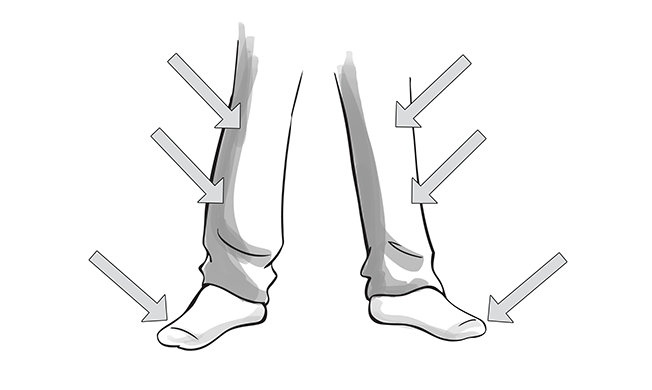
14. Work upward in a flow toward the shoulders with both hands, from the toes to the knee on both legs.
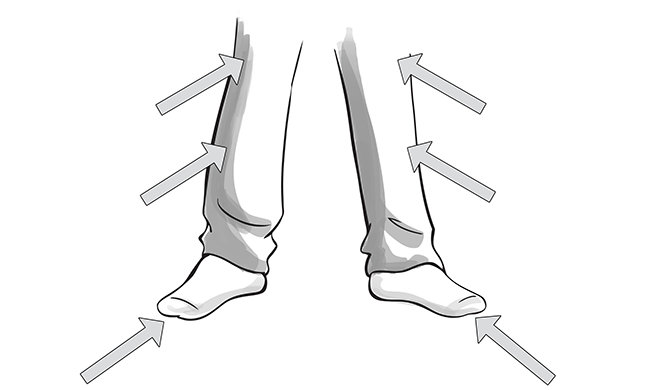
15. Go up one leg from the knee to the hip and then up the other leg in the same way.
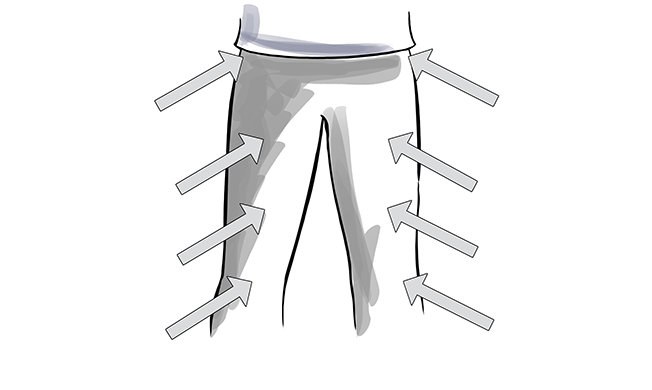
16. Place a hand over each hip with firm pressure.
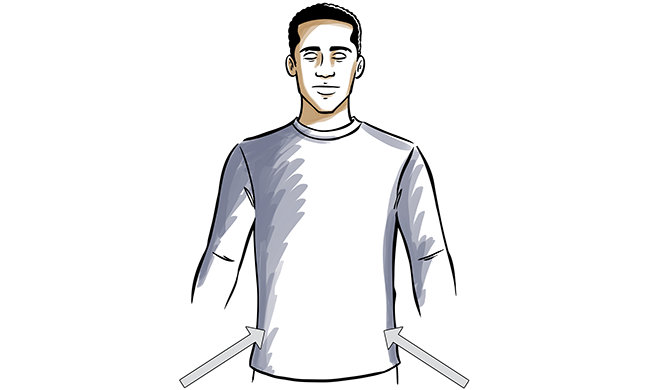
17. Continue with both hands on the small of the back, one on each side, and lift firmly.

18. Go around the abdomen with one hand as before in a clockwise direction.
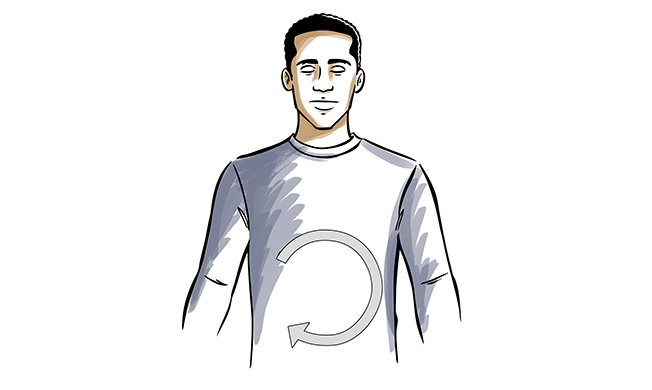
19. Continue up the body, with hands on both sides of abdomen at the waist, sides of chest, above the chest.
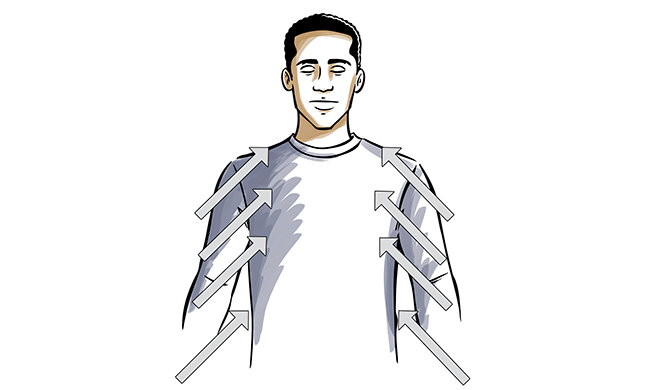
20. Go down each arm and out to the fingers.
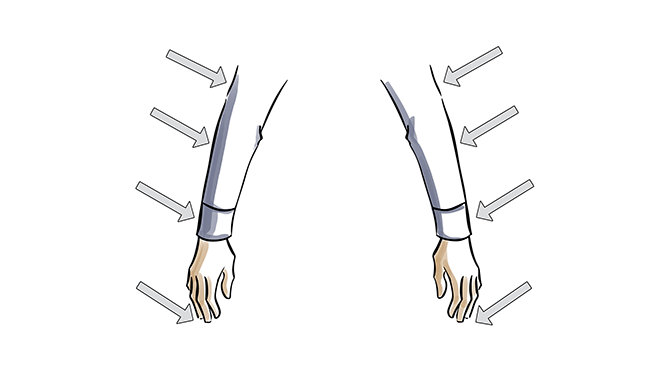
21. Place both hands behind the neck, one on each side.

22. Put your hands on the sides of the face, forehead, back of the head and sides of the head.

23. Continue placing your hands in various positions away from the head toward the extremities of the body.

A large variety of placing of the hands can be done, avoiding, of course, the genital areas or buttocks in both sexes and a woman’s breasts. Proceed up and down the body and always away from the head toward the extremities.
24. If at any time you notice that something is happening with the person (a long pause in answering, a physical pain or discomfort or twitch of the body, a slight change in face color), ask “What happened?”
The person will describe what just happened or what is happening. Leave your hands in position, with exactly the same pressure, while he is talking. Acknowledge and continue with the assist.
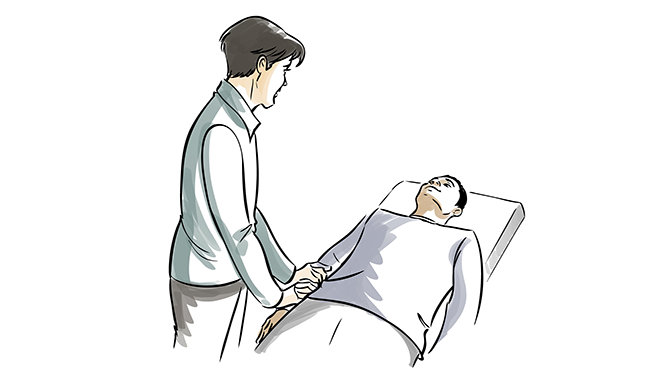
The Body Communication Assist is continued until the person has a realization or experiences some relief. At this point, you say “Thank you” and end off by saying:
“End of assist.”
You do not interrupt the communication or the realization, but let the person finish what he is saying before ending off.
The assist should not be continued past the realization or relief.

